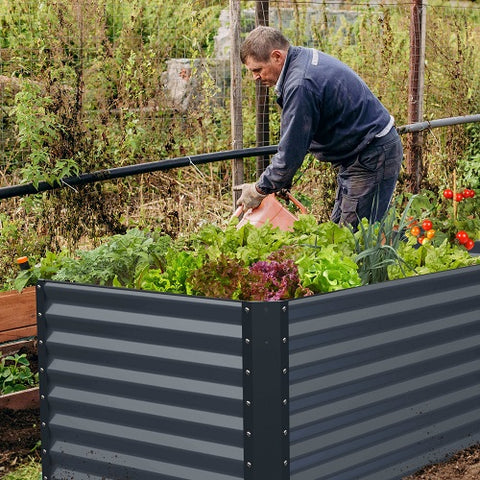Apart from pruning and pest control (discussed later), the maintenance of roses is not a heavy task. The following content also has some reference value for raised garden beds.

Spring
Ensure that any roses loose due to the damage of winter weather are well compressed. Step on the soil around the stem. Make sure to replace or repair any damaged wooden piles, posts, lattices, etc. Special attention should be paid to the renewal of worn burlap to protect the bark. This can usually be done when the ground is too wet or too cold to work.
Covering helps keep the soil moist, keep the temperature stable, and cool the roots of roses. In addition, since the substances used for mulching provide humus, they help regulate the soil and provide plant foods that are slowly released. The mulch can also inhibit weeds. It is also claimed that because it can prevent rain from splashing on the lower leaves of the rose bush from the ground, it reduces the spread of black spots. The rose bed should be covered in May when the soil starts to warm. The covering is a layer of organic material more than 2 inches thick. One of the best is rotten garden compost. Other suitable substances are damp peat moss, buckwheat husks and rotting farm yard manure. Leave a small ring around the bottom of each rose to avoid the risk of damage caused by heating when the cover decomposes.
Summer
Because weeds steal water and provide plant food for roses, it is important to control them. The main way to do this is the physical method, that is, regular hoes; Covering and chemical methods. The two main types of chemical herbicides are:
Connection: This type of herbicide is applied to the leaves of weeds in spring and summer. When chemicals are absorbed, weeds will soon die.
Before germination: This will interfere with the growth of seedlings and leaves, and they will not come out of the soil. It is used in early spring.
Usually in spring, three buds appear from one bud center. Once they are large enough, the outer growth should be pinched off, and the central growth (usually the largest) should be allowed to develop.
Suckers are buds that originate from the lower or underground parts of rose trees. They grow from rootstock, not scion or bud varieties. If they are allowed to stay, they will absorb nutrients from the main stem. The most satisfactory way to identify a suction cup is to note where it comes from. If the bud appears below the joint or at the root, it is a suction cup. If it appears from the ground, it should be torn off at its origin, not cut off and scraped off the soil. By tearing it apart, the entire embryonic system is destroyed, and the possibility of its reappearance is very small.

Some hybrid tea roses do not grow one terminal bud, but develop three on the stem, while others grow flowers in clusters. Degerming involves removing all lateral flowering buds, leaving a terminal flowering bud when they are just large enough. Whether this is done depends largely on personal taste. If a good and large number of colors are needed, nothing should be done, but if a large and perfect individual flower is needed, for example, for display, it should be done.
If there is a good repeat flowering, once the flower fades, it must be removed. The stem should be cut off from the first outward growing leaf, with five leaflets, to avoid removing too many leaves, which is important because they are part of the plant's equipment for producing food from light (photosynthesis).
When watering, flowers and leaves should not be wetted, because the former will become defective, and the water on the latter will promote fungal disease. The use of perforated hoses that are inverted and interlaced between plants avoids these possibilities.
Autumn and winter
To prevent bush roses from being blown by the wind, cut the tall stems in half in November.
Roses should be mixed with 8 ounces Bordeaux mixture and 2+gallons of water in December, when weather conditions permit, to minimize the impact of fungal disease.









